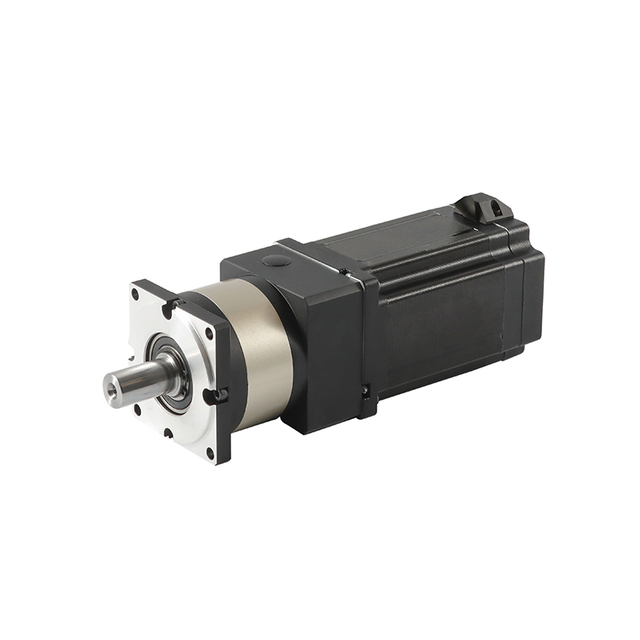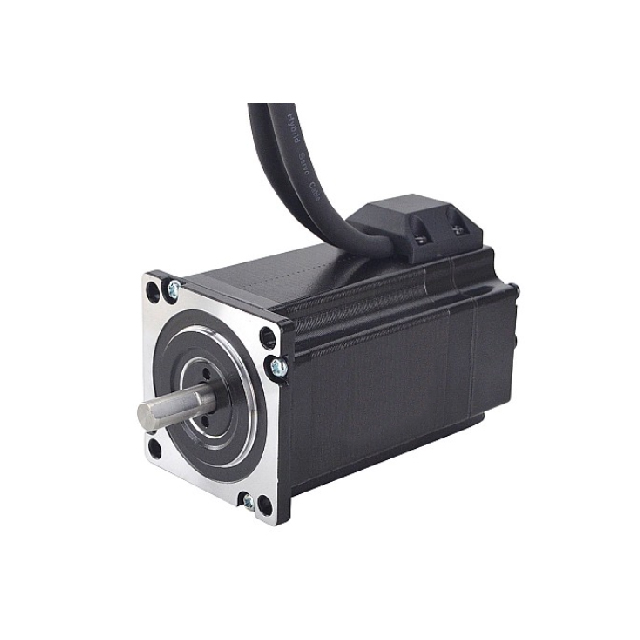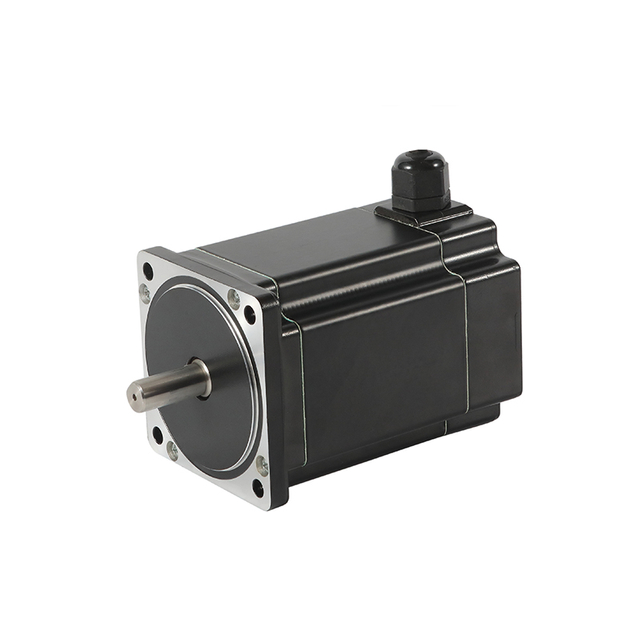
Stepper motors are a cornerstone of precision motion control systems, widely used in robotics, 3D printers, CNC machines, and automation equipment. One of the most common questions among engineers and designers is whether stepper motors have speed control and, if so, how accurately that speed can be managed. In this comprehensive guide, we explore the principles, techniques, and technologies that allow precise speed control in Stepper motors, and how these factors contribute to system efficiency and performance.
Understanding the Basics of Stepper Motors
A stepper motor is an electromechanical device that converts electrical pulses into precise mechanical movement. Each pulse sent to the motor corresponds to a specific angular step, allowing the motor to move incrementally and with exceptional accuracy. Unlike conventional DC motors that rotate continuously, Stepper motors move in discrete steps, providing exact positioning control without the need for feedback sensors (in open-loop systems).
The speed of a stepper motor is determined by the frequency of the input pulses—the faster the pulses, the faster the motor turns. Therefore, controlling the pulse frequency directly controls the motor speed.
How Stepper Motor Speed Control Works
Stepper motor speed control is a fundamental concept in motion control systems that enables precise movement, smooth acceleration, and consistent torque. Unlike standard DC motors that spin continuously when power is applied, Stepper motors rotate in discrete steps, which means their speed is directly proportional to the rate at which input pulses are sent to the motor driver. Understanding how this works is essential for designing accurate and efficient automation systems.
The Relationship Between Pulse Frequency and Speed
At the core of every Stepper motor system lies a driver circuit that sends electrical pulses to the motor’s windings. Each pulse moves the rotor by one step angle, such as 1.8° (for a standard 200-step motor). The speed of rotation depends entirely on how fast these pulses are sent.
The formula to calculate the motor's rotational speed is:
Speed (RPM)=Pulse Frequency (Hz)×60Steps per Revolution\text{Speed (RPM)} = \frac{\text{Pulse Frequency (Hz)} \times 60}{\text{Steps per Revolution}}
Speed (RPM)=Steps per RevolutionPulse Frequency (Hz)×60
For example:
1000×60200=300 RPM\frac{1000 \times 60}{200} = 300 \text{ RPM}
By increasing or decreasing the pulse frequency, the motor's speed can be finely controlled without affecting its accuracy or position tracking.
Components Involved in Stepper Motor Speed Control
To understand how speed control works in real-world applications, it’s essential to examine the key components involved:
1. Controller or Pulse Generator
The controller determines how fast and in what pattern the pulses are sent to the driver. It defines the speed, direction, and acceleration profile of the motor.
2. Driver Circuit
The driver amplifies the control signals and sends current pulses to the motor windings. Advanced drivers support microstepping and current regulation, allowing for smoother speed control and reduced vibration.
3. Power Supply
The supply voltage affects how quickly the winding current can rise and fall. Higher voltage supplies allow faster pulse rates, enabling higher rotational speeds while maintaining torque.
Methods of Stepper Motor Speed Control
There are several ways to control the speed of a Stepper motor, depending on system complexity, precision requirements, and cost considerations.
1. Open-Loop Control
In open-loop systems, the speed is controlled by directly adjusting the pulse frequency sent from the controller to the driver. There’s no feedback mechanism, so the system assumes the motor follows each command precisely. This method is simple and cost-effective but can suffer from missed steps if the load changes or acceleration is too abrupt.
Advantages:
Limitations:
2. Closed-Loop Control
In closed-loop systems, a feedback device such as an encoder or resolver monitors the actual motor speed and position. The system constantly compares real-time data with target values, adjusting the pulse rate or current as needed to maintain the desired speed.
Advantages:
Accurate speed control under variable loads
Smooth acceleration and deceleration
Self-correction for missed steps
Limitations:
Closed-loop stepper systems combine the precision of stepper motors with the efficiency and responsiveness of servo motors, often referred to as hybrid servo systems.
3. Microstepping Control
Microstepping divides each full step into smaller increments by precisely controlling the current waveform in the windings. For instance, a 1.8° stepper motor operating at 16 microsteps per step effectively provides 3200 microsteps per revolution.
This finer control results in:
Smoother motion at all speeds
Reduced resonance and vibration
More gradual acceleration and deceleration
Microstepping doesn’t increase the motor’s maximum speed but significantly improves motion quality and control precision.
Acceleration and Deceleration Profiles
One of the most critical aspects of speed control is ramping—the process of gradually increasing or decreasing the pulse frequency when starting or stopping the motor.
Why Ramping Is Necessary
Stepper motors cannot instantly jump from standstill to high-speed operation. Doing so can cause:
To prevent these issues, engineers use acceleration and deceleration curves—often linear or S-shaped—to gradually adjust speed. These profiles ensure stable operation and optimal torque utilization across the entire speed range.
Factors Affecting Stepper Motor Speed Performance
Several external and internal factors influence how effectively speed control can be achieved:
1. Load Inertia
High-inertia loads resist changes in motion. The motor must provide enough torque to overcome this resistance during acceleration and deceleration.
2. Supply Voltage
Higher voltages allow faster current changes in the windings, improving high-speed performance. However, the driver must regulate current to avoid overheating.
3. Driver Design
Modern stepper drivers with chopper control and microstepping provide smoother and more precise speed control than older full-step drivers.
4. Mechanical Resonance
Stepper motors have natural resonant frequencies where vibrations increase. Avoiding these frequencies or using dampers can stabilize performance at varying speeds.
Practical Example: Controlling Stepper Motor Speed with a Microcontroller
A simple example of stepper speed control can be seen in systems using microcontrollers such as Arduino or STM32. The controller outputs a sequence of pulses through digital pins, and by changing the delay between pulses, the motor speed is adjusted.
More advanced systems use PWM (Pulse Width Modulation) and timer interrupts for precise timing control, enabling smooth, programmable speed ramps and synchronized multi-axis motion.
Advantages of Stepper Motor Speed Control
Properly implemented speed control in stepper motors offers several distinct advantages:
High precision in both position and velocity
Instant and repeatable response to control signals
Smooth motion using microstepping and ramping techniques
Simple integration with digital control systems
No need for complex feedback loops in open-loop designs
These characteristics make stepper motors ideal for CNC machines, 3D printers, camera positioning systems, robotic joints, and medical automation.
Conclusion
In summary, stepper motor speed control works by adjusting the pulse frequency sent to the motor driver, allowing precise and programmable speed variation. With techniques such as microstepping, closed-loop feedback, and ramping, engineers can achieve highly reliable, efficient, and smooth motor operation across a broad speed range.
Whether in industrial automation, robotics, or precision manufacturing, the ability to accurately control speed and position makes stepper motors one of the most versatile and cost-effective motion control solutions available today.
Types of Speed Control in Stepper Motors
Stepper motors can be controlled in several ways depending on the type of driver and control system used. Each method offers different advantages in terms of smoothness, torque stability, and responsiveness.
1. Open-Loop Speed Control
In an open-loop system, the motor’s speed is controlled by setting the desired pulse frequency. No feedback mechanism monitors the actual speed; the system assumes that the motor follows the input command precisely. This method is simple, cost-effective, and suitable for applications where load variations are minimal.
However, at higher speeds or under sudden load changes, missed steps may occur, leading to accuracy loss.
2. Closed-Loop Speed Control
A closed-loop stepper motor system integrates feedback devices such as encoders or resolvers. These sensors continuously monitor the motor's actual position and speed, sending data to the controller for real-time adjustments. The driver can then compensate for load changes or acceleration/deceleration profiles, ensuring smooth, reliable speed control.
Closed-loop systems combine the torque characteristics of stepper motors with the precision and feedback of servo control, resulting in hybrid stepper-servo performance.
3. Microstepping Control
Microstepping is an advanced control technique where each full step is divided into smaller sub-steps by precisely controlling the current in the motor windings. For example, a 200-step motor operating in 16 microsteps per step effectively delivers 3200 microsteps per revolution. This results in smoother motion, reduced vibration, and finer speed adjustment.
Microstepping allows more granular speed control, especially useful in precision applications like camera sliders, 3D printing, or semiconductor equipment.
Factors Affecting Stepper Motor Speed Control
While stepper motors inherently allow precise speed control, several external and internal factors influence performance:
1. Voltage and Current Supply
Higher supply voltage enables faster current rise in the motor windings, improving torque at higher speeds. The driver’s current control capability ensures that the winding current stays within safe limits, preventing overheating while maintaining torque stability.
2. Load Inertia
Heavy loads require more torque to accelerate and decelerate. If the load inertia is too high, the motor may lose steps or stall. Therefore, it’s crucial to match motor torque characteristics to the system’s load dynamics.
3. Acceleration and Deceleration Ramping
Instantly jumping from standstill to high-speed operation can cause step loss. Implementing acceleration and deceleration ramps allows the motor to smoothly increase or decrease speed, reducing mechanical stress and improving reliability.
4. Resonance Effects
Stepper motors naturally exhibit resonance frequencies, where vibrations can cause instability. Using microstepping, dampers, or tuned motion profiles minimizes resonance and ensures stable speed performance across all operating ranges.
Speed Range of Stepper Motors
Stepper motors operate effectively within a specific speed range, typically from 0 to 2000 RPM, depending on the motor type and driver configuration.
Low-Speed Range (0–300 RPM): Offers high torque and maximum positioning accuracy.
Mid-Speed Range (300–1000 RPM): Suitable for applications requiring balance between speed and torque.
High-Speed Range (1000–2000+ RPM): Requires high-voltage drivers and reduced torque load to maintain stability.
Exceeding the motor's design limits can result in torque drop-off or loss of synchronism, leading to missed steps.
Closed-Loop vs. Open-Loop: Which Provides Better Speed Control?
Below is a detailed comparison between the two control methods:
| Feature | Open-Loop Stepper System | Closed-Loop Stepper System |
| Feedback Mechanism | None | Encoder or sensor feedback |
| Speed Accuracy | Moderate | Excellent (real-time correction) |
| Position Accuracy | High (when no load variation) | Very high (self-correcting) |
| Torque Efficiency | Limited at high speeds | Consistent across wide speed range |
| Heat Dissipation | Higher (constant current) | Lower (current adjusts dynamically) |
| Response Time | Slower | Faster and smoother |
| Cost | Lower | Higher |
| Best For | Low-cost, fixed-load applications | High-performance, variable-load systems |
From this comparison, it's clear that closed-loop systems provide superior speed control, particularly when operating under changing loads or rapid acceleration conditions.
When to Choose Open-Loop Control
Open-loop systems are best suited for:
Simple automation with predictable loads
Low-speed or low-torque applications
Cost-sensitive projects where high precision is not mandatory
Educational or prototyping environments
If your motor operates under consistent conditions and precise feedback isn't required, open-loop control offers a cost-effective, reliable solution.
When to Choose Closed-Loop Control
Closed-loop control is ideal for:
Industrial automation where uptime and precision matter
Applications with dynamic or varying loads
High-speed motion systems requiring smooth acceleration
Environments where torque and energy efficiency are priorities
For instance, in robotic arms, CNC milling, and conveyor control, maintaining consistent speed under different loads is crucial—making closed-loop stepper systems the preferred choice.
Conclusion: Which Provides Better Speed Control?
Between the two, closed-loop control provides far superior speed control thanks to real-time feedback, self-correction, and torque optimization. It ensures stable, precise, and efficient performance, even in demanding environments. However, open-loop control remains valuable for its simplicity, low cost, and reliability in predictable operating conditions.
Ultimately, the choice depends on your application's requirements:
Choose open-loop for simplicity and affordability.
Choose closed-loop for accuracy, dynamic performance, and long-term reliability.
Both systems have their place in modern motion control, but for the most consistent and intelligent speed regulation, closed-loop stepper control is the clear winner.
Practical Applications of Speed-Controlled Stepper Motors
The versatility of stepper motors with speed control makes them ideal for a wide range of industrial and consumer applications, including:
CNC machines and milling equipment for precise feed rate control
3D printers for layer-by-layer motion synchronization
Camera and stage automation systems for smooth, controlled movement
Automated guided vehicles (AGVs) and robotic arms requiring consistent motion speeds
Medical devices such as pumps and scanners for accurate flow or scanning rate control
In each of these scenarios, precise speed modulation ensures optimal performance, energy efficiency, and reduced mechanical wear.
Optimizing Stepper Motor Speed Control for Best Performance
To achieve the best speed control performance, consider the following best practices:
Use a high-quality driver with fine microstepping capability.
Match the motor's torque curve to the load profile.
Implement smooth acceleration and deceleration ramps.
Avoid operating within resonance frequency zones.
Use closed-loop feedback for critical or variable-load systems.
Ensure adequate power supply voltage for high-speed operation.
By following these practices, system designers can ensure precise, reliable, and efficient Stepper motor performance across a wide range of applications.
Conclusion
Yes, stepper motors do have speed control, and when properly managed through pulse frequency adjustment, microstepping, and closed-loop feedback, they offer exceptional control precision and stability. Whether used in manufacturing automation, robotics, or digital fabrication, Stepper motors remain one of the most versatile and controllable motion systems available today.
English
العربية
Français
Русский
Español
Português
Deutsch
italiano
日本語
한국어
Nederlands
Tiếng Việt
ไทย
Polski
Türkçe
ພາສາລາວ
ភាសាខ្មែរ
Bahasa Melayu
ဗမာစာ
Filipino
Bahasa Indonesia
magyar
Română
Čeština
Монгол
қазақ
Српски
हिन्दी
فارسی
Slovenčina
Slovenščina
Norsk
Svenska
українська
Ελληνικά
Suomi
Հայերեն
עברית
Latine
Dansk
Shqip
বাংলা
Hrvatski
Afrikaans
Gaeilge
Eesti keel
Oʻzbekcha
latviešu
Azərbaycan dili
Български
Català








